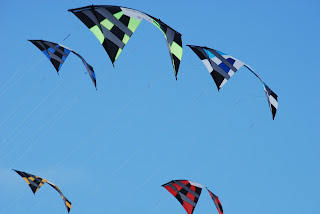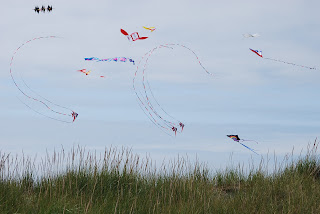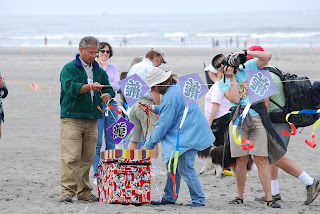The Crow Indian nation once ranged from the Three Forks in Montana to the Black Hills of South Dakota, from the 500 mile long Musselshell River in central Montana to the Big Horn Mountains in northern Wyoming. The rivers tumbled cold and unobstructed with numerous species of fish, fresh water mussels, and crawdads.
Within these wild drainage basins lived the last survivors of the great Northern Buffalo herds - countless millions roamed north from the Yellowstone River to the Saskatchewan grasslands. When the Crow people lived in the area that is now Red Lodge, Montana, it was a place of worship, food and protection.
Chief
Plenty Coups by Jonathon Johnson
Red Lodge, MT
Red Lodge, MT
Born in 1848, Plenty Coups (Aleek-chea-ahoosh, meaning "many achievements") was a man of war - and then a man of peace. Possessing vision, bravery, and leadership, he was made a chief of the Apsáalooke (Crow) tribe by age 28 and helped bridge a gap between two cultures. In 1884, he became one of the first Apsáalooke to own and settle on a farm, which was deeded to him through the federal Indian Allotment Act. On his 320-acre tract, he opened a general store, built a home, and worked the earth until his death in 1932 at age 84. At his request, 195 acres of his land was made into a public park. Upon his death, the Apsáalooke people voted to designate him as their last traditional tribal chief.
"The buffalo gone and freedom denied him, the Indian was visited by two equally hideous strangers, famine and tuberculosis. He could cope with neither. His pride broken, he felt himself an outcast, a beggar in his own country. It was now that Plenty Coups became the real leader of his people."
From the book Plenty-coups: Chief of the Crows
by Frank B. Linderman
"All my life I have tried to learn as the chickadee learns, by listening, profiting by the mistakes of others, that I may help my people. I hear the white man say there will be no more war. But this cannot be true. There will be other wars. Men have not changed, and whenever they quarrel they will fight as they have always done...
...We love our country because it is beautiful, because we were born here. Strangers will covet it and someday try to possess it as surely as the sun will come tomorrow. Then there must be war, unless we have grown to be cowards without love in our hearts for our native land. And whenever war comes between this country and another, your people will find my people pointing their guns with yours. If ever the hands of my people hold the rope that keeps this country's flag high in the air, it will never come down while an Absarokee (Crow) warrior lives." ~Chief Plenty Coups
For generations untold, Indian war parties and hunting parties regularly climbed over the pass between southern Montana and northern Wyoming. They moved through the basin in search of fight and food. Buffalo, elk, deer and other migratory animals swarmed in vast numbers throughout the valley and far out onto the plains and rolling, treeless open country with the red soil and sweeping green hills.
In the mid-19th century, the Nez Perce people splintered into two groups, with one side accepting coerced relocation to a reservation and the other refusing to give up their fertile land in eastern Washington. Following the Big Hole battle of 1877 near Lost Trail Pass on the Montana-Idaho border, Chief Joseph and his band of 800 men, women, and children began an epic struggle. This country helped hide them as they slogged through Sunlight Basin and over Dead Indian Summit in their attempted 1,800-mile escape from the pursuing 2,000 strong U.S. Cavalry.
Dead Indian Summit
Chief Jospeph Scenic Highway, MT
Chief Jospeph Scenic Highway, MT
The Nez Perce fought a cunning strategic retreat, including 13 battles, toward refuge in Canada. On October 5, 1877, Chief Joseph surrendered to units of the U.S. Cavalry near Chinook in the north of what is now Montana - a mere 40 miles from the border. This surrender marked the last great battle between the U.S. government and an Indian nation.
"Hear me, my chiefs, I am tired.
My heart is sick and sad.
From where the sun now stands, I will fight no more forever."
~Chief Joseph
~Chief Joseph
Experiencing this spectacular land gives one a deeper understanding of the plight of the early Native Americans. The flight path is reproduced by the Nez Perce National Historic Trail. One part of that, the Chief Joseph Scenic Highway, goes across the canyon of the Clarks Fork of the Yellowstone River, Wyoming’s only designated Wild and Scenic River. With winding switchbacks to the top of Dead Indian Summit, this drive is absolutely breathtaking. The 220-degree view from this point is among the most dramatic in the West and is a major attraction along this Byway. There are various legends for the origin of "Dead Indian"; with skirmishes between early prospectors or the U.S. Army and a party of Indians in 1878, one of the Indians died and was left at the summit.
Not far from there, in Cody, Wyoming, we viewed a number of other outstanding bronze sculptures.
In the valley of the Little Bighorn River in June of 1876, more than 260 soldiers and attached personnel of the U.S. 7th Cavalry met defeat and death at the hands of several thousand Lakota and Cheyenne warriors.
A proud man with deep seated political ambitions and a ruthless reputation, General George Armstrong Custer laid the ground work for his own defeat. Before going into battle against an unnumbered foe, he reduced his forces thinking it would bring more glory, praise, and credit his way to achieve a victory with fewer men. Against the advice of his Indian scout, he marched his men all night. Fatigued by the long march, the men and horses were no match for the waiting Sioux warriors. The Sioux carried away the swallow-tailed flag of the Seventh Cavalry that was captured during that battle.
Thunder at Little Big Horn
Vic Payne
After the defeat of General Custer, a small band of renegade Sioux headed north for the Canadian border with the Seventh Cavalry flag flying as a testimony to their victory over the “yellow hair”. The carrier of the flag, depicted here, and his wolf companion, proudly fly the colors of their fallen enemy. Later this small band of Sioux warriors was overtaken and the flag was retrieved. It is currently on display at the Custer Battlefield Museum located at the site of the battle in Montana.


Boy Called Buffalo
Vic Payne
Young Indian boys were often named after the animal whose strength and protection their parents wished upon them. Observing his namesake, the child would learn its ways and emulate its strengths. There was, however, always the danger that the young warrior would meet his end through his spiritual brother, the mighty buffalo.
Oglala Sioux Indian chief Crazy Horse was born c 1842, near present-day Rapid City, S.D. Fighting against removal to a reservation in the Black Hills, in 1876 he joined with Cheyenne forces in a surprise attack against Gen. George Crook; then united with Chief Sitting Bull for the Battle of the Little Bighorn. In 1877, Crazy Horse surrendered and was killed in a scuffle with soldiers.
Crazy Horse
R.V. Greeves
The artist admires the visionary
leader and legendary warrior. He says “Crazy Horse is an American hero. He did
not fight for the American flag, but he did lay down his life for the land we
call America.”
Here she is portrayed with her young son standing
majestically in the blowing wind. The artist created a unique finish on the
sculpture by painting it many colors.
Buffalo Prayer
James Earle Fraser
This dramatic and emotional
Plains Indian medicine man stands in reverent prayer. The artist modeled the
sculpture after he witnessed a “medicine man, or counselor of the tribe, make
his prayer. It was for the return of the buffalo.”
This scupture portrays several Plains Indians looking with wonder into a vast unknown world. This mysterious sculpture leaves its interpretation to the eyes and mind of the beholder. How would YOU interpret it?
For more information
Crazy Horse
Nez Perce National Historic Trail
Outdoor Sculpture Guide
Buffalo Bill Historical Center


































